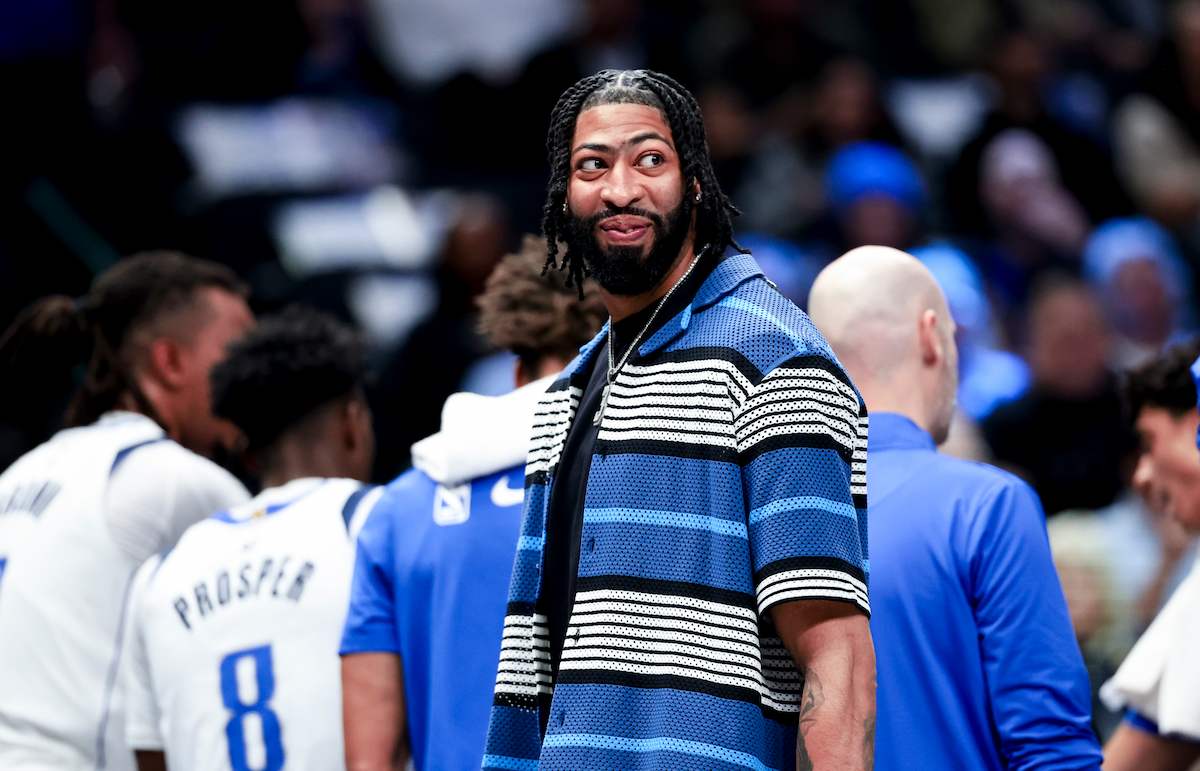Key Highlights
-
- Keegan Murray scored a game-high 32 points, including eight threes, in the Sacramento Kings‘ 118-94 rout of the Golden State Warriors on Tuesday
- He also helped contain sharpshooters Stephen Curry and Klay Thompson, and Sacramento posted a 97.8 defensive rating in the win, its fifth-lowest mark of the season
- Murray was 2 of 7 inside the arc, periodically showcasing how he’s grown and the ways he can continue developing as a scorer
Only twice in Keegan Murray’s NBA tenure — one briefer than two years long, yet already packed with 165 appearances — has he scored more than his 32-point explosion Tuesday.
Along the way, Murray drilled eight triples and kept the Sacramento Kings’ season alive for at least three more days, powering his club to a 118-94 rout of the Golden State Warriors. Sacramento will face the New Orleans Pelicans Friday night to battle for the West’s No. 8 seed and a first-round date with the Oklahoma City Thunder.
Given the circumstances, facing elimination against a dissipating dynasty and tasked with hounding the icons of Golden State’s long range trailblazing, Tuesday probably served as Murray’s finest career performance.
He routinely sprung free off the ball for open threes — exposing the Warriors’ shoddy, lackluster perimeter defenders — wiggled inside for the occasional bucket and tethered himself to Stephen Curry and Klay Thompson throughout his arduous 39 minutes of action.
All of it was an encapsulation as to why the Kings invested the fourth overall pick in him 22 months ago, why they’ve never been shy about bestowing lofty expectations and responsibilities onto his shoulders, and why the franchise is so steadfastly determined to actualize the promising ceiling he repeatedly displays.
Murray played 33 minutes in his NBA debut. He’s started 163 of 165 career games. He’s ducked below 20 minutes just seven times and never logged fewer than 12. He entered the league primed to contribute. The Kings have never downplayed that reality. They’re fostering an environment for him to become the wing defender and platonic secondary scorer this core requires. Murray’s already rewarding their faith.
How Has Keegan Murray Developed As A Defender?
After a rookie campaign partially defined by staccato screen navigation and clunky lateral mobility, Murray’s returned as Sacramento’s designated stopper. It’s a role borne somewhat through necessity of a roster lacking such an archetype, but one he’s also earned. Mike Brown tossed him into the fire this year, and he’s responded by becoming one of the NBA’s better wing defenders. A year ago, his minus-1.0 Defensive Estimated Plus-Minus (D-EPM) ranked 332nd league-wide. This year, his plus-1.6 D-EPM ranks 52nd.
He’s lively on the ball, attentive off the ball, shimmies over screens and sturdily applies his 6-foot-8 frame as a hindrance. Force is not a preeminent feature of his game, but he’s learning to steadily incorporate it. Upon its full-fledged arrival, he and the Kings will be grand benefactors.
All night, he shadowed Curry and Thompson, intruding on their airspace, denying them touches and limiting their volume. They averaged a combined 40.4 shots and free throws in 62.4 minutes per game this season. They logged 68 minutes Tuesday. Murray and Keon Ellis held them to 26 shots and three free throws in a do-or-die scenario for a Warriors group staring at their mortality, desperately craving more scoring pop.
Where Has He Grown Offensively?
Murray’s approach to growth — embracing discomfort and ambiguity for the sake of development — has seeped into the offensive side of the ball, too. As a rookie, 62 percent of his field goals were from deep, he ventured into the midrange for 15 percent of his attempts, and pull-up jumpers comprised 10.7 percent of his shot profile. This year, 50 percent of his shots are beyond the arc, 29 percent of his looks come from midrange and his pull-up frequency has spiked to 24.9 percent.
He’s vastly more willing to test the waters off the dribble. He’s gone from shooting 63 to 71 percent around the rim, 37 to 46 percent in the midrange and and 53 to 56 percent overall on two-pointers. There’s newfound experimental aggression he typically and understandably avoided in his inaugural season, now wielding the confidence and encouragement to cozy up with the unknown. The Kings may have slide from third to ninth and 48 to 46 wins, yet Murray’s blossoming has helped maintain a rosy future.
Tuesday marked his fourth career outing of 20-plus shots. He didn’t fade into the background after a red-hot start, a fairly common happening for him these past two years. Sacramento doesn’t need 32 points on 73.5 percent true shooting every game, but it certainly wouldn’t mind if he dialed up the shot-hunting from 12-13 to 15-18 a night.
Despite a 2-of-7 showing inside the arc, the flashes were evident. When threes weren’t available — by virtue of defensive priority shifting or execution sharpening — Murray surveyed his options, patiently snaked into the lane, found space and delivered.
Whereas instances like those may have seen the ball swing elsewhere in 2022-23, Murray’s refined his off-the-bounce bag. Per 100 possessions, he attempted 3.1 more two-pointers this year than last, while his three-point volume declined from 7.6 to 7.1. He’s taking more shots because of his own expansion, both tangibly and intangibly.
His outside shooting (8-of-13 on threes) remains a hallmark. Time after time, he winded through Sacramento’s maze of off-ball screens — tightly curling around picks to separate from his man — and floated into soft spots when the defense tilted elsewhere. His size, instincts and movement enable him to generate plenty of three-point opportunities.
Versatile scoring volume is a skill, and Murray touts it. The Warriors’ felt its fatal impact. His final bucket, a long ball drifting up from right the corner, penned the last words of their tumultuously disappointing 2023-24 story.
The next step for Murray is turning aggression and force into synonyms of his scoring style. Too often, his poise — a willingness to not rush ill-fated pursuits — betrays him. It devolves into cumbersome hesitancy: mild-mannered drives in which he looks less like a 6-foot-8, 215-pound forward with rugged intentions and more like a 6-foot-3 guard with fingers-crossed, wide-eyed hopes of scoring. His career .117 free-throw rate is a reflection of that.
This is the repercussion of his composed off-the-bounce boogies. As he increasingly distances himself from any pigeonholing of a shooting specialist, he must better toggle between light-footed patience and mean-spirited, hard-charging forays inside the arc. That frame must be a constant weapon rather than primarily relegated to volume and versatility beyond the arc.
He can reach that point. The strides he’s achieved this season may not scream off any Basketball-Reference page, but they certainly do on film and could portend well for his continued development. Tuesday was an embodiment of how far he’s come in Year 2, exhibited his path ahead, and punctuated the importance of his maturation for this era of Kings basketball.






